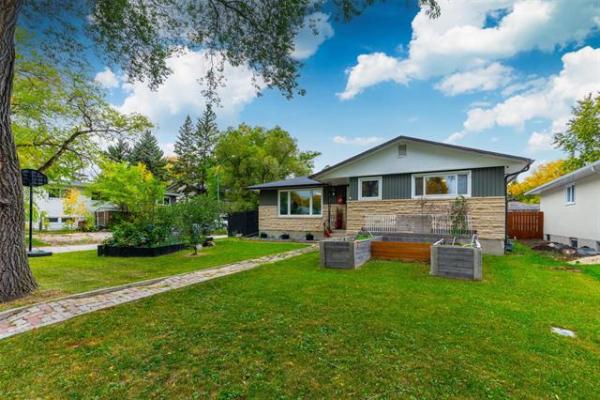With a seemingly infinite number of colour choices to peruse, standing in front of a wall of paint chips is one of life's deer-in-the-headlights experiences.
You may have walked in dreaming of a perfect hunter green for your office, but on the chip, that hunter green looks a lot darker than you expected. Maybe Reef Green is more your speed, or True Green. But maybe True Green has too much blue in it. Suddenly you're thinking green may be better suited to your front door than your office. And with all the decorator magazines featuring white walls these days, maybe white's the right choice. Who knows?
Designers know. They know all the trade secrets on everything from paint brands and finishes, how to choose the right tones for the right room and how to avoid colour choices that would make even the mailman cringe.
"If you want to change your rooms, paint is the most affordable luxury," says interior designer Scott Yetman, "because even the most expensive paint only costs $90 to cover 500 square feet of wall space."
Yetman and Julie Charbonneau, of the design house de Poitiers Inc., are two of Montreal's top interior designers. The two advance the general idea that paint colour choice is the image of the little black dress, a base that can be accessorized with diverse textures and colours. And when it comes to choosing a colour, both designers are in neutral territory.
"My interiors are neutral in colour," Yetman says. "And it's not necessarily even about colour, but about the concept: Is it open and airy, or cosy and more noticeable? I prefer a neutral space with art works, accent colours and textures."
Charbonneau concurs: "Neutral is safer," she says. "I'd rather see colour on the cushions and the curtains."
When these designers say neutral, they're referring to earth tones and off-whites, not pure white. "White is not white when you put it next to a colour," Charbonneau says. "Benjamin Moore's Halo looks grey next to a sheet of white paper. Neutrals can be seen as cold, but in the end, they're often warm and relaxing."
When speaking to designers, specific colours are rarely mentioned. Instead, the talk centres on mood. "The rule of colour 101 that I learned years ago at designer school was cool colours recede and warm colours advance," Yetman says. "Use warmer colours for a cosy space and cooler colours in a larger space."
Mention strong colours like orange, red and apple green, and their reaction is immediate. "I'm not one of those decorating junkies that uses colour everywhere," Yetman says. "I prefer a classic backdrop where you choose where to have your drama. Otherwise, people don't know where to look. With too much colour going on, nothing stands out. For contemporary paintings, the background should be neutral."
So devoted is Yetman to the idea of sticking to a neutral colour scheme that he painted most of his house Farrow and Ball's White Tie. He does, however, have one exception: "For antique maps or architectural drawings, the background could be a dramatic (i.e., dark) colour like hunter green, chocolate brown or brick red. I recently painted my den black and hung the walls with architectural prints. Over the fireplace, I hung a flat-screen TV, which doesn't show on a black wall but would on a white."
Yetman hesitates to recommend dramatic colour in a large space, though, because he fears it will be depressing. "I like blue for clothes," he says, "but on walls it can be gloomy."
When faced with clients whose children want their rooms painted hot pink or navy blue, Charbonneau has only one suggestion: "Don't listen to them. A whole room in bubble-gum pink is so pink you have no idea," she says. "But if they insist, it will be the palest pink or blue available."
Instead of filling your house with a mishmash of colours, Charbonneau suggests going with what's around you, carrying the outside in. "If you're in a house by the ocean," she says, "using robin's egg blue would be nice. And for a city style, a grey and white colour scheme works. It's important to select a palette and stick to it throughout the house. I'd say no way to a red living room and a green kitchen. See how the colours relate to each other, and keep the little rooms a shade or two darker."
Then there's the topic of finishes -- matte or glossy. Whereas designers were once keen on shiny trim and matte walls, that's changing. "I don't like to contrast everything," Yetman says. "If your walls aren't great, go matte, but lately I prefer the light lustre of an eggshell finish. Of course, there are always exceptions. I recently finished a dining room where we painted the walls a high-gloss yellow. With the mahogany antiques and chandeliers, everything just sings."
Charbonneau has definite views on baseboards and trim. "We play it too safe and nice," she says. "I like to see darker colours than on the walls, like a dark grey or green grey, which is more European. In England and France, you see that a lot."
She's also big on this new high-gloss trend. "For a change, I'm going to start to push high-gloss for walls and ceilings. It looks fabulous."
On the topic of coloured ceilings, the designers don't quite agree. While Charbonneau likes to use colours on ceilings instead of the traditional bright white to give depth to a room, Yetman has reservations. "When the ceiling is high or a point of interest, you can paint it," he says. "Otherwise, it will come down to you."
The two designers are completely in agreement, though, on the issue of special-effects painting. "I would rather kill myself than do that," says Yetman. "I'm just not a faux person. The only finish I do now is use cheesecloth with a glaze to emulate old plaster. It's about texture."
Charbonneau values the texture of paint so much she insists kitchen cupboards be installed, then painted on site, rather than spray-painted in a studio, saying, "I want to see the brush strokes. Otherwise, you might as well buy a plastic door."
Both designers agree the last reason to choose a colour is simply because you like it. As Charbonneau says, "It's not a sweatshirt."
"Consider what's good for the room," Yetman adds, "not the emotional reaction. Think of your house like a wardrobe. You don't walk around wearing orange suits, but an orange scarf is great."
-- Postmedia News



